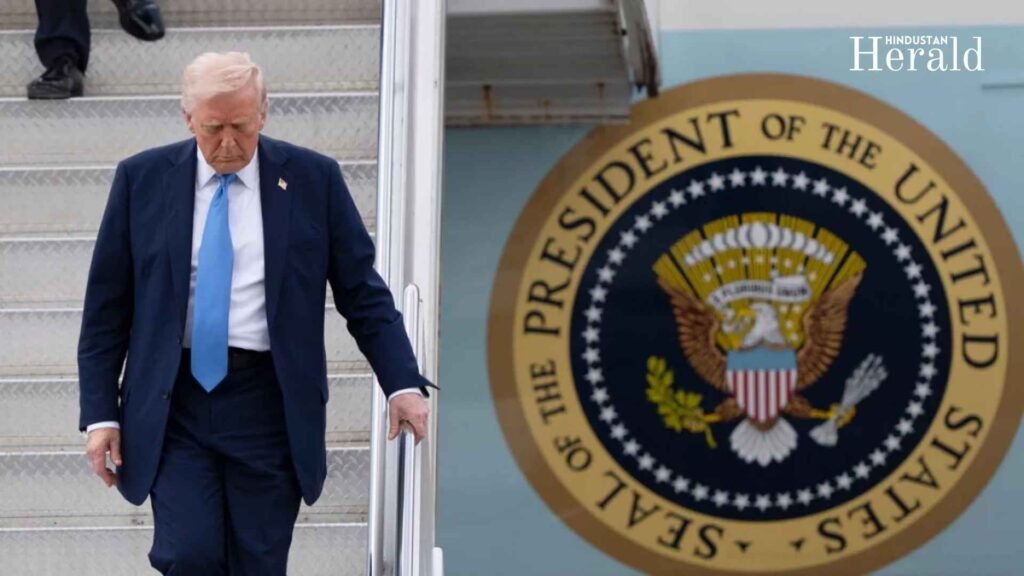
Key Highlights:
Washington, April 2:
In what is being dubbed ‘Liberation Day’, the world is bracing itself for a potential shift in global trade dynamics as US President Donald Trump prepares to announce a major round of reciprocal tariffs. The announcement will be made today, April 2, during a special address from the Rose Garden of the White House, with tariffs taking immediate effect once declared.
According to US Treasury Secretary Scott Bessent, the announcement is scheduled for 4 PM Washington time (1:30 AM IST on April 3). The event will be streamed live on all official White House social media platforms, adding to the intense anticipation around the globe.
Why the World Is Watching
The forthcoming announcement has already sent tremors through international trade circles. The White House has sharply criticized India for imposing 100% tariffs on US agricultural goods, and also highlighted similar restrictive trade practices in Canada, the European Union, and Japan.
“This is about restoring fairness,” a senior administration official said.
“Countries like India have benefitted from access to US markets while imposing heavy barriers of their own.”
This statement follows a pattern of protectionist economic policy from Trump, reminiscent of his first term, where trade wars with China and other nations shook global supply chains and caused long-term economic ripples.
What Will the Tariffs Mean?
While full details are yet to be disclosed, reports suggest that Trump’s team has drafted a plan to impose a 20% tax on most goods imported into the US. This could include consumer electronics, food products, auto parts, and textiles.
“US importers will bear the brunt of these tariffs,” said White House spokesperson Karoline Leavitt,
“and if implemented right away, American companies will be the first to feel the pinch.”
According to a BBC analysis, these new taxes could force US companies to:
- Change suppliers
- Split additional costs with international partners
- Pass price hikes on to consumers
The cascading effect could disrupt supply chains, increase inflation, and potentially lead to a recession not only in the US but globally.
India in the Crosshairs
India finds itself particularly exposed in this unfolding drama. The 100% agricultural tariff on US goods—cited by the White House—has put India front and center in the retaliatory response.
“India has consistently protected its domestic market, while benefiting from American trade openness,” said an official close to the matter.
“This imbalance can no longer continue under the new policy.”
India’s exports in pharmaceuticals, IT services, and textiles could come under scrutiny if the US decides to mirror trade terms with punitive tariffs.
The Indian government has not issued an official response, but analysts warn that retaliation could follow if Indian goods are targeted. Trade experts believe this could be a starting point for a new chapter in US-India trade relations, likely more contentious than cooperative.
Trump’s ‘Liberation Day’: What’s Behind the Name?
The April 2 announcement has been internally branded as ‘Liberation Day’ by the Trump administration, a symbolic name suggesting freedom from unfair trade practices.
This messaging seems designed to galvanize domestic support, especially among blue-collar workers and manufacturing sectors that have long accused foreign competitors of exploiting open US markets.
However, critics argue that rhetoric-driven protectionism risks economic isolation and may jeopardize longstanding trade relationships built over decades.
Recession Risks Loom
A Washington Post report recently revealed that the Trump administration is weighing a 20% tariff across most imports. Additionally, the plan proposes using tariff revenue to fund tax rebates or direct dividends for US citizens—a move that could further politicize the economic policy shift.
While the potential for short-term domestic gains exists, economists warn of severe long-term consequences:
- Increased prices for US consumers
- Disrupted international supply chains
- Retaliatory tariffs from global allies
- Stifled trade and reduced export competitiveness
The IMF and WTO have not yet issued a formal statement, but officials in Brussels and Tokyo are reportedly preparing countermeasures should their countries be affected.
Business Reactions Mixed
Early reactions from the US business community are mixed. While some sectors support Trump’s move, hoping for better protection against foreign competition, others fear increased input costs and strained international partnerships.
“American companies aren’t ready to absorb this shock,” said a senior executive at a US electronics firm.
“Tariffs don’t create jobs—they kill them by killing demand.”
Meanwhile, Wall Street is expected to react swiftly once the announcement goes live, with potential volatility across sectors like retail, automotive, and manufacturing.
What Comes Next?
The global economy now awaits the specifics of Trump’s tariff list, especially whether it will be sector-based or across-the-board. Trade ministries in India, the EU, and Japan are on alert, with several expected to issue counter-policy statements within the next 48 hours.
India’s commerce ministry is reportedly drafting contingency measures, including possible tariff reviews and WTO consultations. If Trump’s move extends to Indian sectors such as software services or generic pharmaceuticals, it may also ignite legal challenges under existing trade agreements.
Trade Reset or Trade War?
The Trump reciprocal tariffs announcement is poised to become a defining moment in the future of global trade diplomacy. If executed broadly, it could reshape alliances, trigger retaliatory responses, and escalate economic uncertainty worldwide.
India, already walking a tightrope on trade and diplomacy, must now balance strategic response with economic pragmatism, especially as it prepares for election cycles, monsoon season agriculture planning, and budget forecasts.
The world is watching, and the Rose Garden at 4 PM Washington time might become the center stage for the most consequential economic decision of 2025.
The Hindustan Herald Is Your Source For The Latest In Business, Entertainment, Lifestyle, Breaking News, And Other News. Please Follow Us On Facebook, Instagram, Twitter, And LinkedIn To Receive Instantaneous Updates. Also Don’t Forget To Subscribe Our Telegram Channel @hindustanherald
